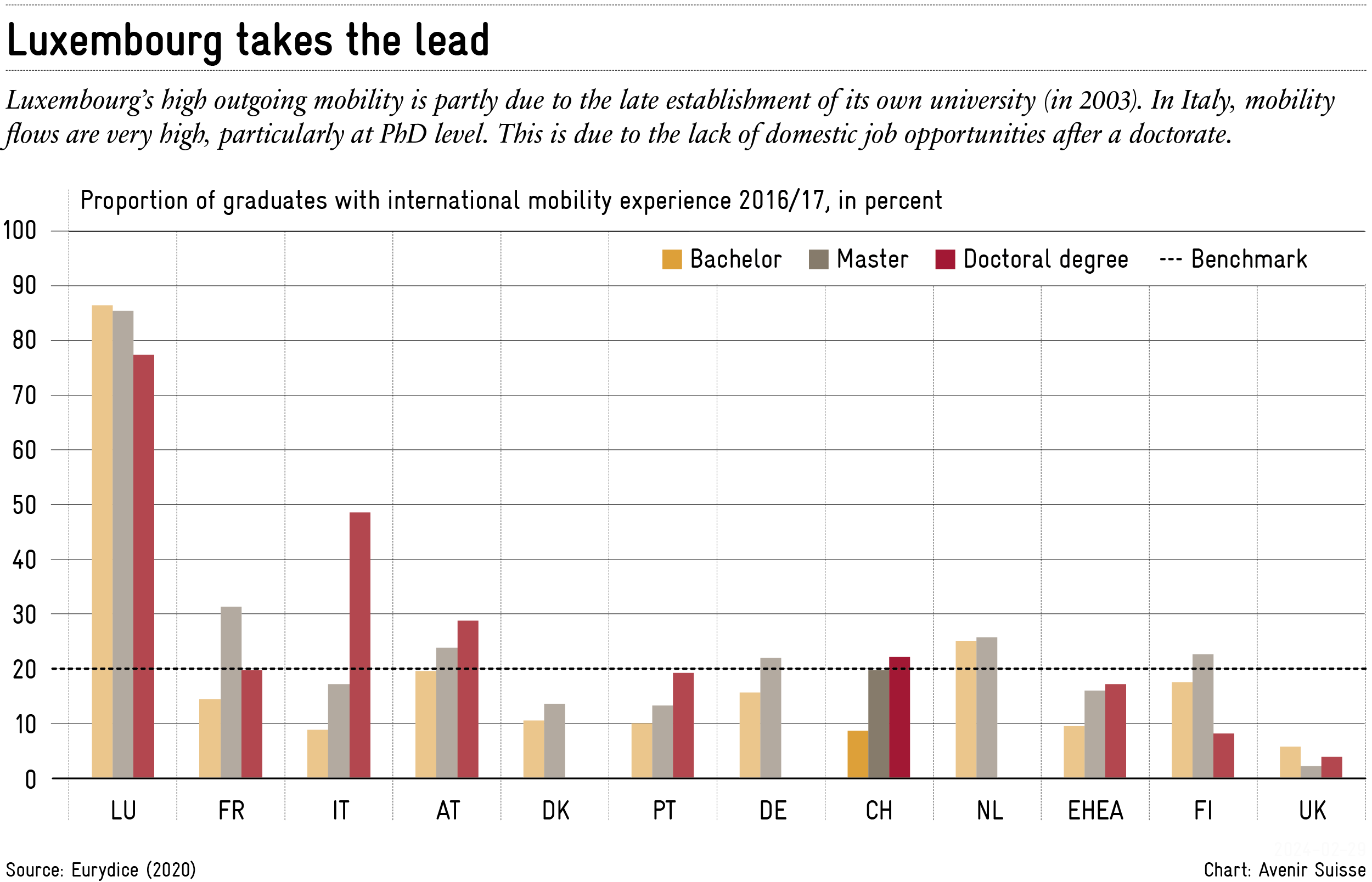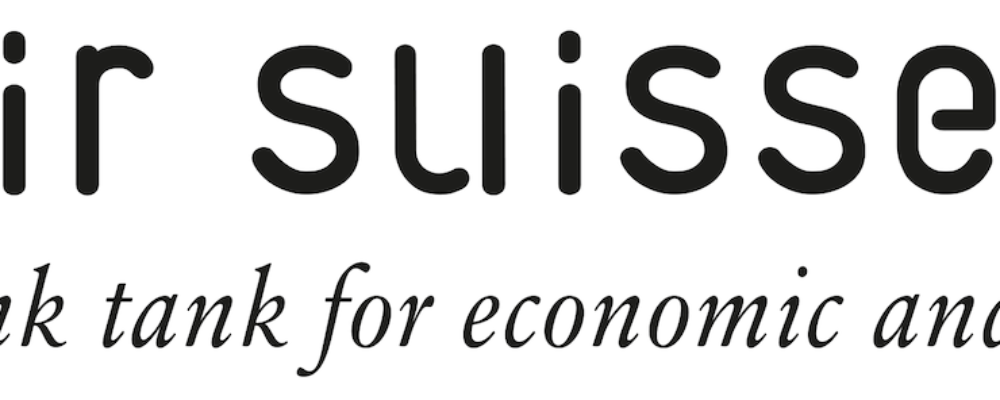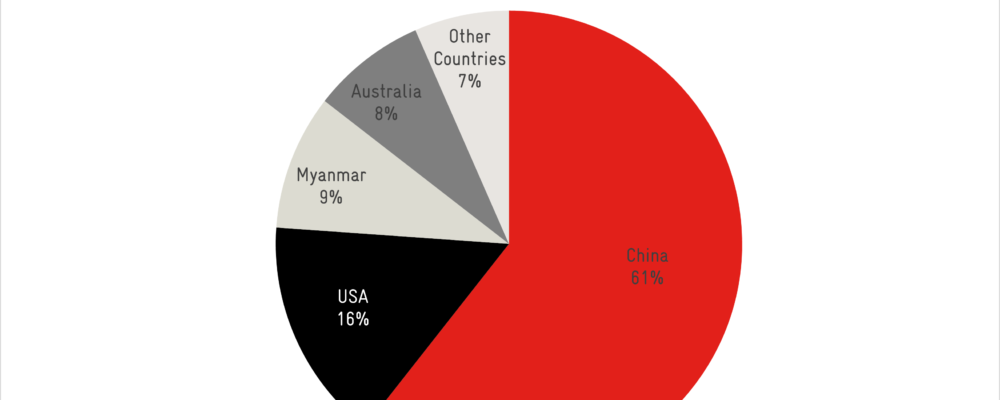The Bologna declaration was signed 25 years ago and launched the reform of European higher education. The aim was to enable graduates of all degrees to enter the labor market, including the bachelor’s degree. Avenir Suisse examined this goal in its latest publication “The Bachelor’s Degree, an Underestimated Diploma”. The reform pursued numerous other objectives as well. To what extent they have been achieved can be found in the Bologna process implementation report.
European cooperation
The Bologna process desired to strengthen European cooperation in higher education. The focus was on the introduction of a common European higher education area – as a continuation of the idea of a united Europe. Due to its size, the area was intended to enable a better position in international research and education competition. With the alignment of the different higher education programs and the introduction of the European higher education area (EHEA), this goal has generally been achieved.
There was also a desire for closer cooperation regarding quality assurance. To this end, external systems were created to assess proper implementation. Their results are collected centrally and published in the European quality assurance register for higher education (EQAR). In addition, most Bologna countries have created their own national qualifications framework, in line with the overarching quality system and therefore contributing to the comparability and comprehensibility of qualifications. In this respect, the goals concerning European cooperation have also been reached.
Aligning Programs
To enable a common higher education area, the program structure needed to be harmonized. Before the reform, major differences between countries existed and the programs were often difficult to compare. In Switzerland, for example, it was common to graduate after four years of study, whereas France had a three-tier and other countries a two-tier system. Several reform objectives were aimed at aligning the program structure and improving comparability.
The Bologna reform opted for a two-part education with a bachelor’s and master’s degree and a PhD as an additional third part. This structure was implemented on a large scale in the Bologna states, although there are certain differences in the amount of work required at each level. To better measure this, a unified credit system (European Credit Transfer System, ECTS) was developed. Each credit point corresponds to a workload of 25 to 30 hours.
This improved the degree comparability and diploma equivalence. It is now easier to classify a degree than prior to the reform. The goals regarding the alignment of structures have thus been achieved. In addition, the measures taken facilitate mobility between universities – a central concern of the Bologna reform.
Encouraging Mobility
The Bologna process was supposed to improve student exchanges and mobility. These efforts were directly linked to the overarching goal of a unified European higher education area. In 2009, it was decided that by 2020 around 20 percent of graduates should gain international experience during their studies.
The Implementation report shows that international mobility has increased in the past twenty years, but the target has not been reached (see figure). The 20 percent threshold was set arbitrarily, without sufficiently considering framework conditions for international mobility and the general increase in student numbers.
Switzerland has also failed to increase the number of student exchanges. Similar to many other Bologna states, mobility amongst graduates increases with their level of degree. Master’s students just about meet the target, while PhD students just about exceed it. Switzerland is among the top five European countries for incoming students, with most of them starting their PhD.
According to research by Movetia, the national agency for exchange and mobility, the average mobility rate for Swiss students graduating in 2020 was 15.7 percent. But there are major differences between universities. Three factors appear to be particularly decisive for higher mobility: international course offerings, an appropriate study environment and attractive framework conditions for incoming students. The more the institutional mindset is geared towards mobility (in- and outgoing), the more likely students are to take the opportunity to go abroad.
Conclusion
The Bologna reform has achieved its original goal of standardizing and therefore has managed to improve the comparability of the European higher education system. The process can generally be considered a success. However, there is still room for improvement in certain fields.
Especially regarding the employability of all degrees and in terms of mobility. In this regard, there is room for optimization. Intercultural and personal skills can be promoted through international exchange, which, according to a study by the DAAD, also improves job market opportunities.
One thing is clear: After a quarter of a century, the European higher education area is still a work in progress. Due to the fast-changing environment, the structures need to be constantly reviewed and adjusted if necessary. This is in the interests of all those involved: 25 years after the reform, we find ourselves in the midst of change.
“Avenir Suisse is an independent think tank that works for the future of Switzerland by developing evidence-based, liberal, free-market ideas.”
Please visit the firm link to site






